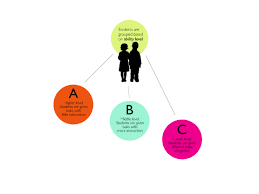Introduction:
In today’s rapidly evolving world, appreciating and embracing diversity in all its forms plays a vital role in fostering an inclusive culture. The Inclusion Development Program (IDP) aims to make schools and educational environments more equitable by supporting children with diverse learning needs. This article will explore the benefits of implementing an Inclusion Development Program and offer suggestions for promoting a more inclusive learning environment for all.
Advantages of the Inclusion Development Program:
1. Encouraging collaboration and social integration: The IDP fosters a sense of belonging among students, encouraging them to learn from each other and build valuable social networks. By adopting inclusive practices, teachers can create an environment where every child can be involved in activities, regardless of their learning style or special needs.
2. Broadening student perspectives: When students with different backgrounds and abilities work together, they’re exposed to new ideas and perspectives, enriching their overall learning experience. The IDP helps students acquire a deeper understanding of varying cultures, become more empathetic, and appreciate diversity within their community.
3. Supporting emotional wellbeing: Integrating children with special needs into mainstream classrooms can significantly enhance their self-esteem and emotional stability. Feeling accepted by their peers increases their motivation to engage in activities and fosters a sense of accomplishment.
4. Enhancing teaching methods: Implementing the IDP challenges educators to improve their approaches. Adapting lessons to meet diverse learners’ needs often leads to more creative lesson plans that cater to individual preferences, ultimately benefiting all students.
How to Strengthen Inclusive Practices in the Classroom:
1. Training and professional development: Educators should attend workshops or participate in online courses on inclusive education strategies. Investing time to upskill allows teachers to better support students with varying abilities in their classroom.
2. Multi-tiered systems of support (MTSS): MTSS is an effective approach for identifying and addressing individual learner needs. This data-driven method helps teachers design tailored interventions for students, helping them progress at their own pace.
3. Universal Design for Learning (UDL): UDL advocates for multiple means of representation, expression, and engagement in the classroom. By implementing UDL principles, educators ensure all students have equal access to resources and learning opportunities.
Conclusion:
The Inclusion Development Program represents a significant step forward in fostering equity and inclusiveness in education. By applying this program, educators can create supportive learning communities that nurture every student’s unique potential. By embracing the IDP and continually refining our teaching methods, we can build a more inclusive society that values diversity in all its forms.











